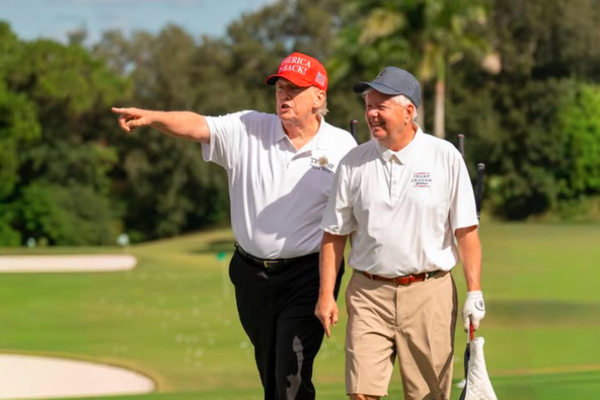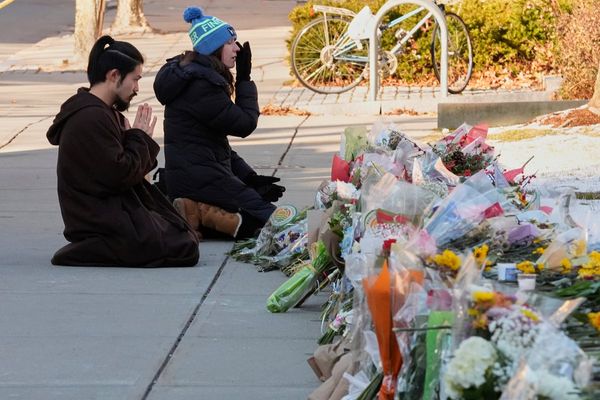
“A little cherry on a big cake.” That’s how Dries Vanthoor described his pole position for the Daytona 24 Hours this weekend. The BMW driver pointed out after he’d secured a first top spot in qualifying for BMW’s M Hybrid V8 LMDh that there’s “still a big thing to happen”. And he was talking about the race.
The true significance of Vanthoor’s pole lap wasn’t that it has put him at the front of the field for the start of the opening round of the 2025 IMSA SportsCar Championship, but that it provided the final proof that the M Hybrid V8 is there on outright pace.
It backed up an impressive start to BMW’s third North American campaign with the LMDh it has developed in conjunction with Dallara: the car topped four of the six sessions in the pre-event Roar test last weekend, was then quickest qualifying on Thursday and in among the top three in the times in two of the trio of free practice sessions.
BMW has been the underachiever of the new GTP era in IMSA that started in 2023, notwithstanding a couple of wins. Victory in the Watkins Glen 6 Hours in June ’23 was inherited on the disqualification of the Porsche that crossed the line in first place and the 1-2 for the Rahal team last September at the Indianapolis owed a lot to the wet conditions and the ability of the cars to stretch its energy allocation.
That’s the difference this time around. The M Hybrid is bang on the pace, number one ahead of Acura, Porsche and Cadillac in the pecking order of the GTP full-timers. (The other big underachiever, Lamborghini, is only scheduled to contest the five long-distance rounds this year.)
BMW has always been keen to point out that a late decision to return to the pinnacle of sportscar racing with what became the M Hybrid was made late - in June of 2022, to be exact, which explains why it opted to join IMSA first in ’23 and only expand into the World Endurance Championship in season two last year. A double programme straight out of the box would have been overambitious.
“Clearly when we started the programme we were late with the decision and we were always catching up,” says head of BMW M Motorsport Andreas Roos. “From the middle of last year, we saw some great development in terms of our performance.

“We were getting there, Dries with the quickest lap in [first] qualifying at the Le Mans 24 Hours before Hyperpole, but also the 1-2 at Indianapolis and the podium in the WEC at Fuji. We were getting more and more out of the car and using the potential of the car. This looked promising for us and we knew we still had quite some things to tweak on the car to make it better.”
That included invoking one of the evo joker performance upgrades allowed to manufacturers under the LMDh rules. For this season there is a brake system update, which, insists Roos, is aimed less at outright performance and more at “consistency and driveability”.
There has also been a change in the way BMW is going about its racing with the M Hybrid. Porsche and Penske have made much of what it calls its “one team” approach straddling the WEC and IMSA - it insists it was central to its ultra-successful season with the 963 LMDh in 2024 that yielded the drivers’ title in both series as well as a victory at Daytona 12 months ago.
BMW runs with Rahal, BMW M Team RLL to give it its official name, in IMSA and the Belgian WRT squad in WEC. But for this year there is a greater cross-pollination across the two series. Vanthoor and Sheldon van der Linde, regulars with WRT last year, are also contesting the full IMSA campaign with Rahal. It’s a move aimed at driving on development of the M Hybrid V8 at a greater rate.
“Clearly it is paying off,” says Roos. “It helps with the interchange [of information] on the engineering side. Having drivers doing both series will help us to accelerate the programme by sharing the information. It makes it more of an open book. It is a win-win situation because the drivers also get more seat time, which is always beneficial.”
BMW’s first appointment in the WEC this year will be in Qatar for the 10-hour fixture that opens proceedings in the Middle East at the end of next month. Improving on that second position notched up by Vanthoor, Marciello and Marco Wittmann over six hours at Fuji last September is “clearly the goal”, says Roos.
BMW’s rise up the field over the second half of the 2024 WEC was aided by a bit of help from the Balance of Performance. Series rulemakers the Automobile Club de l’Ouest and the FIA clearly stated that they would edge up newcomers over the course of the season. Alpine, which pipped BMW to fourth spot in the manufacturers’ standings, benefitted from the same philosophy.

There’s also some help this weekend for BMW under the IMSA BoP. The M Hybrid is racing at the minimum weight of 1030kg and the maximum power of 520kW or 698bhp allowed in GTP. But interpreting the BoP is more complicated than in the past.
There is also a new element to the BoP in IMSA at Daytona, which mimics the ‘powergain’ introduced in WEC at Le Mans last year. The cars are given a plus or minus figure above a certain speed in a move designed to balance the straightline performance of the cars. In WEC powergain kicks in at 250km/h (155mph), while in IMSA there is a linear phase-in between 230 and 240km/h (142 and 149mph).
BMW has been given a figure for the race of minus 0.6%, while Porsche’s 963 LMDh loses 3.8% and the Acura ARX-06 3.5%. Cadillac’s V-Series.R gains 2.4% power above the magic 240km/h figure, but it is racing down at 500kW (670bhp) and weighs in 30kg more than the BMW.
BMW has clearly made itself favourite going into the Rolex 24 on Saturday, but if it has to have its cake and eat it then it needs to be quick at the sharp end of the race. Daytona is traditionally won in the final hours, most likely after a late safety car that regroups the field and sets up a dramatic dash to the flag.
Kevin Magnussen, back in sportscar racing with BMW after what he promises really is the end of his Formula 1 career, knows the importance of keeping the car in good shape through the duration. It’s easy to forget that the Dane has raced in this event twice in the past, the first time in 2021 as part of a full IMSA campaign with the Ganassi Cadillac squad and the second on a one-off with the same team the following year. He had joined Peugeot for its 2022 WEC entry, only to ship out of the programme to return to F1 when an opportunity arose back at Haas.
“It is the last two hours at Daytona where it happens,” says Magnussen, who shares the pole-winning #24 Rahal entry with Vanthoor, Philipp Eng and Raffaele Marciello at Daytona before switching over to the WEC to share with the last of those three. “You need the toe-ins at the front to be correct and all the flicks and the aero parts on the car to still be there.
“You need the car to be nice and shiny for the last two hours when it really matters.”







